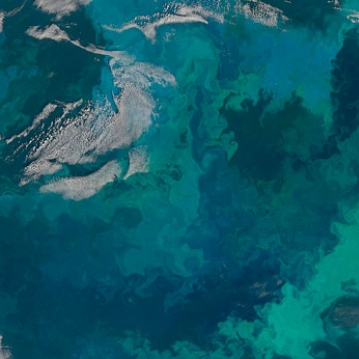
How do environmentalists feel about the concept of ocean fertilization as a form of carbon sequestration?
Ocean fertilization is a technique whereby swaths of ocean are “seeded” with iron to promote the growth of phytoplankton (microscopic plants that form the base of the marine food chain), and is one of several promising geo-engineering techniques that could help mitigate global warming. Also known as carbon sinking or ocean seeding, the idea was first suggested in the 1980s by Moss Landing Marine Labs’ John Martin, who subsequently conducted experiments off the California coast confirming that phytoplankton growth could be encouraged by dumping ferrous sulfate (iron) into nutrient-deprived areas of the ocean.
More recently, California entrepreneur Russ George has developed ways through his firm, Planktos to use ocean fertilization to help governments and companies meet emissions reduction goals. In 2012 Planktos helped the Haida Gwaii tribe of western Canada spread 100 tons of iron sulphate into the Pacific 180 miles off the coast of British Columbia, which triggered a phytoplankton bloom across 10,000 square miles of ocean. Juvenile salmon feed on phytoplankton, and salmon runs came back fourfold across the region. The tribe is keen to use ocean fertilization to restore the severely depleted salmon fishery they have depended on for centuries and to generate income from the sale of carbon credits to the Canadian government (a carbon credit - or carbon offset - is a credit for greenhouse gas reductions achieved by one entity that can be purchased and used to compensate (offset) the emissions of other entity).
But some environmental leaders warn that ocean fertilization might be too good to be true as a tool for mitigating climate change. “Many scientists have suggested that the complex interplay between the iron and carbon cycles prevents any direct extrapolation of how much carbon dioxide will actually be removed from the atmosphere following fertilization,” says Jackie Savitz, Vice-President for U.S. Oceans at the non-profit Oceana. “This means we will never be able to estimate the benefits, much less verify them well enough to sell carbon offsets based on fertilization.”
Savitz adds that “much of the carbon taken up by phytoplankton may simply be re-released when those plants are consumed by bacteria or zooplankton at rates that are impossible to accurately predict.” She also worries that large-scale, long-term fertilization could drastically alter marine ecosystems: “Unanticipated downsides, like changing the phytoplankton community structure, could cause repercussions throughout the food web, and may disturb key feeding relationships.”
Another issue with ocean fertilization is that phytoplankton blooms could release large amounts of other greenhouse gases, like methane or dimethyl sulfide, that are even more potent than the carbon dioxide they are sequestering. Also, the bacterial decay resulting from the die-off of massive iron-induced phytoplankton blooms could create oxygen-free dead zones in the water column that could leave marine ecosystems in worse shape than before.
“Rather than engaging in expensive and uncertain experiments on our oceans,” Savitz concludes, “we should move away from fossil fuels, by stopping subsidies, and stopping expansion of offshore drilling and at the same time, invest in technologies like solar and wind power that are certain to reduce carbon emissions without threatening complex ocean ecosystems.”
CONTACTS: Moss Landing Marine Labs, www.mlml.calstate.edu; Planktos, www.planktos.com; Oceana, www.oceana. org.
EarthTalk® is produced by Doug Moss & Roddy Scheer and is a registered trademark of Earth Action Network Inc. View past columns at: www.earthtalk.org. Or e-mail us your question: earthtalk@emagazine.com.






















